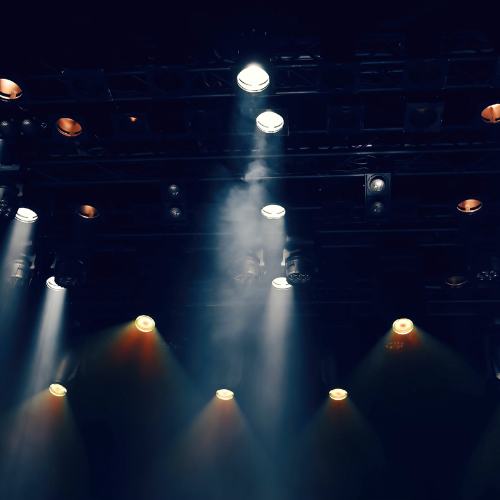Lighting plays a crucial role in transforming a bare stage into a world of imagination. The right lighting design can ignite emotions, highlight key moments, and visually guide the audience’s focus. But with so many different types of stage lights available, choosing the right techniques can feel overwhelming. Fear not! This guide will equip you with 6 must-have lighting techniques to navigate the world of theatrical lighting and bring your educational theater productions to life!
1. Master the Art of Layering:
Think of stage lighting like painting with light. The first layer is often a general wash of light, typically created with floodlights or PAR cans. This establishes the overall brightness and sets the mood for the scene. Next, layer ellipsoidal spotlights to draw attention to specific actors or props. Fresnel spotlights can then be used to bathe downstage areas in a softer light, creating depth and dimension on the stage.
2. Unleash the Power of Color:
Color is a powerful tool in your lighting designer’s arsenal. Warm colors like reds, oranges, and yellows evoke feelings of comfort, joy, or excitement. Conversely, cool colors like blues and greens can create a sense of calmness, mystery, or even danger. By strategically using color washes and spotlights, you can create the desired atmosphere for each scene and enhance the emotional impact of your production. Understanding basic color theory goes a long way in achieving this!
3. Embrace the Spotlight (Literally):
The spotlight is a classic technique for highlighting key actors or moments in a scene. Ellipsoidal spotlights offer a focused beam of light that can be adjusted in size and shape. Use them to create dramatic moments, draw attention to specific details, or follow an actor as they move across the stage.
4. Don’t Forget the Backlight:
Backlighting is often an underutilized technique, but it can add a touch of magic to your productions. Placing lights behind actors or scenery can create a halo effect, separate them from the background, and add depth to the stage picture. Experiment with different colored backlights to create a truly unique visual effect.
5. Leverage the Magic of Movement (Moving Lights):
Moving lights, also known as intelligent fixtures, take your lighting design to the next level. These lights can automatically change their position, color, and beam size, adding dynamism and movement to your production. Imagine gently pulsating lights for a romantic scene or rapidly shifting colors for a chase sequence. Moving lights can create a truly immersive experience for your audience.
6. Let There Be Light, But Safely:
Theatrical lighting can be powerful, but safety is paramount. Always ensure your equipment is properly grounded and inspected regularly. Educate your students or crew members on safe handling practices for lighting fixtures and cables.When in doubt, consult a qualified electrician for assistance.
By mastering these essential lighting techniques, you’ll be well on your way to creating captivating productions that ignite the imaginations of your students and audiences. Remember, lighting is a storytelling tool, so use it creatively to enhance your performances and bring your vision to life!
Building Your Dream Theater: The Next Steps
To make informed decisions about your theater’s lighting system, consider consulting with a professional lighting designer. They can assess your needs, design a lighting system that fits your budget and vision, and recommend specific fixtures.
Ready to bring your vision to life? At Epic Tech, we specialize in designing and installing top-quality theatrical lighting systems for educational institutions. Our experienced team can help you choose the right fixtures, ensure proper installation, and provide ongoing support.
Contact Epic Tech today to discuss how we can help you build a theater that inspires and illuminates!


